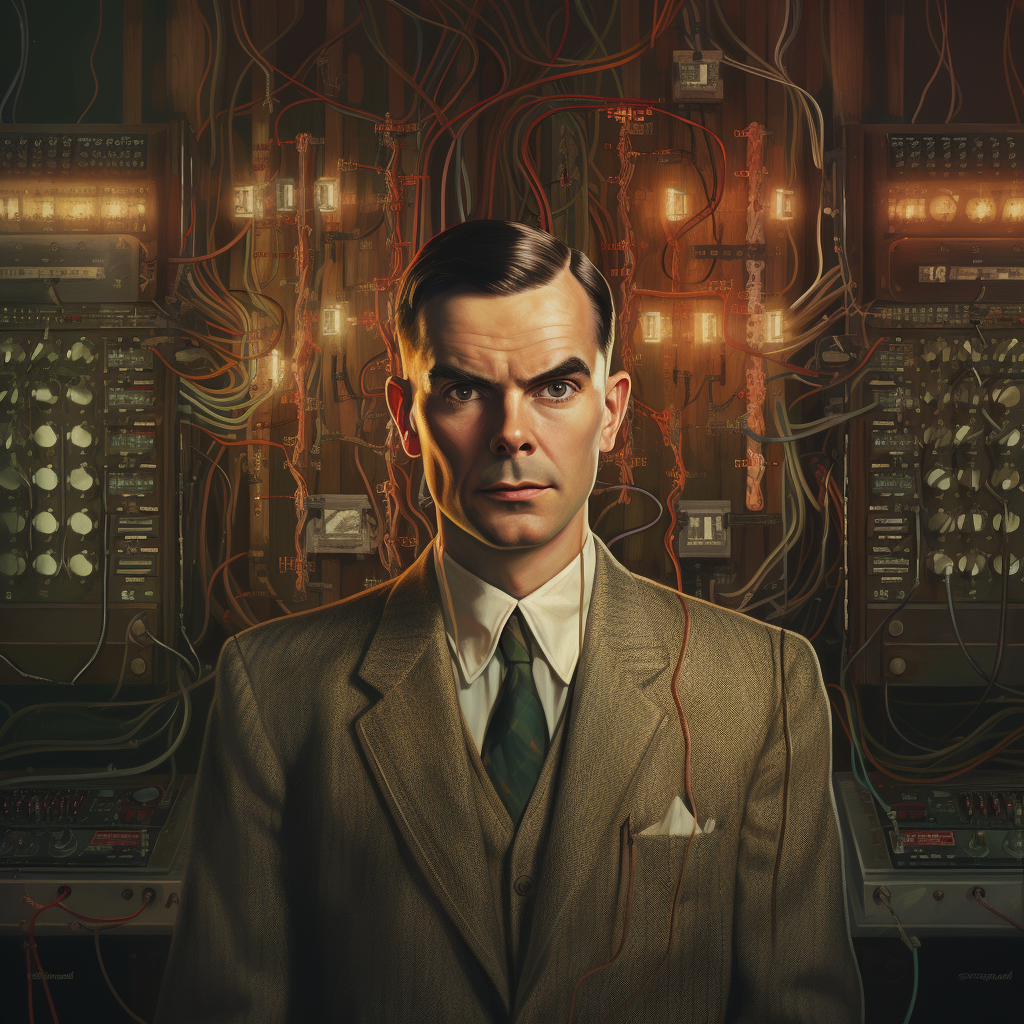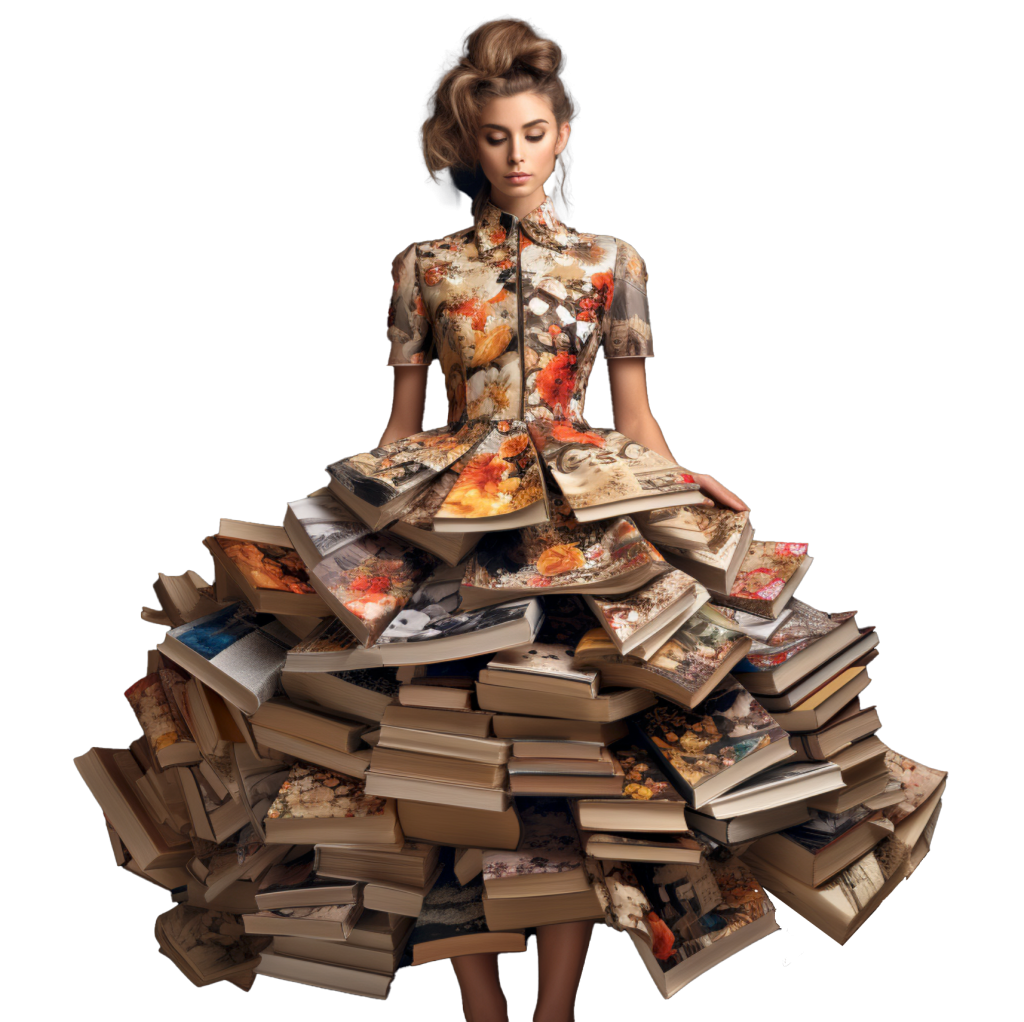AI is here, and it’s here to stay. As a creative, here are the basics you need to know
Unless you’ve been hiding under a rock, you can’t have missed the two letters on everyone’s lips in the last few months: ‘AI’. These two small letters mean big, in fact HUGE changes in all industries, but especially in ours—the creative industry.
In this article, we will delve a little into the history of AI and what we feel are the important things to know as a creative in order to understand it. We will go into both the pros and some of the cons. Caveated heavily that we are all living in a time when everything digital is changing rapidly, so be aware this was true at the time we wrote it.

Midjourney prompt: Alan Turing test
The brief history of how AI began with its logical beginnings
The launch of a version of ChatGPT in April 2023 was the culmination of many more years (around 80) of ruminating, experimenting and progress within digital media. It is only the latest and most well-known example of AI. A brief recap on basic history because we should all know this: we had the industrial revolution (mid-18th to mid-19th Centuries), the information age began late 20th Century where things shifted from industry to info, the rise of what’s now known as the internet began with advancements in the 60s, 70s until what’s called the digital age (1980s-90s), accessible computers (1989) and the rise of big data. Now the AI revolution (2023) is surely upon us, which is really the latest part of the digital age. Mckinsey defines these revolutions as an increase in productivity and quality of life, but often at the expense of life as we knew it, and with huge social implications.
Where did the information age come from? It all began with logic, which is the basis of all digital processes. Logical thinking became a thing 1000s of years ago with ancient Chinese, Indian and Greek philosophers and their theories. It continued with names like Gottfried Leibniz, Thomas Hobbes and Rene Decartes (we’ll leave you to look those names up, perhaps even using ChatGPT). Now machines logically reason for us and much faster than we could alone – we use them to add things up (Excel spreadsheets), find out where things are (Google Maps), answer questions about anything we don’t know (Google/ChatGPT) and perform complex tasks for us, like any favourite design or writing software you may use. And we all have mini computers called mobile phones attached to our hands at most times. We are definitely living the information age.
Alan Turing, his Turing Test, Tim Berners-Lee and modern-day computing
Computers, albeit a lot larger than the ones we are used to because we’ve all seen the photos of the computer taking up a whole room, accelerated into being with two main people. Alan Turing is the first, he is widely considered to be one of the fathers of modern computing. He is best known for his work on the enigma machine; used in the war (1940s) to crack German Enigma code in order to gain intelligence. We recommend you watch the film The Imitation Game or use AI to summarise what you need to know if this interests you. In brief, it was the first time a computer machine was used in this way, and it was much quicker than the 100s of human minds who tried to crack code at the same time. It suddenly became clear exactly what computers were capable of.
Something else famous associated to Turing, was his ‘Turing Test’. It’s essentially a test he developed, still used today, that measures a machine’s intelligent behaviour—behaviour that you wouldn’t be able to differentiate from real human intelligence. With the birth of AI, this is perhaps the first time that this crazy feat is really possible.
Then came Tim Berners-Lee (1989). He is considered a computing forefather as he created the World Wide Web, the www in your computer browser. This was a new innovation that linked information and resources together. As more people began to use computers the world wide web grew, and fast. Computer processing power and information became available to all and changed the way we interacted with the world forever. Today the www allows AI models to interconnect and exchange knowledge in real time all the while learning from each other and improving. Powerful stuff.
Midjourney prompt: Woman with books as a dress
Some basic things you should know about AI
Let’s dive into AI a little deeper and how it works. AI is the development of intelligent machines that understand everyday language, objects and patterns. AI uses logic to make decisions based on algorithms and data.
The basics of how AI works: an algorithm, programme and software explained
- Algorithm: An algorithm is a specific set of instructions computers use to complete a task. It’s the single part of a recipe – one step in the process. In a computer programme many different algorithms are combined for different tasks. In Google Maps, one algorithm works out the shortest route from point A to point B, and another will look at traffic updates.
- Programme: A computer programme is a set of instructions made up of many single algorithms. It’s the longer recipe for the computer – it tells the computer what ingredients (data) to use and what steps (algorithms) to take to complete a full task. It can be as simple as a calculator or as complex as a web browser like Google Chrome.
- Software: Software is the computer’s recipe book – it’s how it works. Various different programmes combine into software to tell computers what to do: from scripts, to applications, to the whole operating system (OS).
If we compare the whole thing to cooking: the cookbook (software) contains many recipes (programmes). Each recipe has specific steps (algorithms) to make a certain dish. The cookbook can have all sorts of recipes for appetisers, main courses, desserts, etc. Similarly, software can have different programmes for word processing, web browsing, photo editing, and so on.
In very simplistic terms, an AI application is a computer programme, which is a type of software, and it uses specific algorithms to make decisions or predictions.
AI and AGI
In most examples of AI around today, and creative programmes like ChatGPT, Mid-journey, Firefly and many others, the AI is specialised for a specific task. It operates in narrow parameters (boundaries), even while it learns from available data in a really wide way. This is why it’s called narrow AI. More examples would be Siri, Alexa and image recognition software. These programmes can get stuck if not prompted in the right way and can’t think for themselves or adapt to questions and queries that they don’t understand.
AGI, which stands for Artificial General Intelligence, is a more advanced type of artificial intelligence because it would understand, learn, and apply knowledge to what it’s doing, just like we would. It is not yet possible, but the field of AI research is aiming for this. It would be able to do anything we could because it can draw on other knowledge or adapt its learnings to become unstuck. This is going to become possible in the next few years according to this article.
The main question debated in AGI at the moment is: how to control something more intelligent than ourselves, constantly working to come up with new ways of doing things that we have no control over. It is an intelligence so advanced, that even the people who invented it don’t fully know how it works. You can look at a talk by Elon Musk for a warning on what could happen if it’s not properly regulated, which it currently isn’t by the way although many countries are trying to speed up regulation..

Midjourney prompt: Woman working with hair as a neural brain
How does AI work exactly with machine learning, deep learning and artificial neural networks?
AI and machine learning
Machine Learning is a subfield of AI focussing on the development of computer algorithms that improve automatically learn and improve through experience. At its core, it is how AI systems learn from data.
AI and deep learning
Deep learning is another subfield of AI. Think of AI as a big circle, and deep learning as a smaller circle inside it. It’s one method we can use to teach computers to think a bit like us humans. Deep learning mimics the way our human brains work, not one dimensional across one layer of thought, but multi-dimensional with infinite ways of thinking and putting conclusions together. It’s even named after our brain neurones – it uses artificial neural networks.
ChatGPT and LLMs – what they are and why they’re important
ChatGPT is an artificial intelligence software created by OpenAI. It’s called a Large Language Model (LLM) which is a model that uses machine learning in language to generate human-like text. You ask a question or give it a statement, and it talks back to you as if it were a person. It’s like a very advanced chatbot but with so much data at hand it can answer almost anything. It’s one important step in the advancement of AI and one that we are all now using so it’s a good example we all know.
AI and where it’s heading in practical examples both amazing and scary
Lastly, let’s look at what’s been going on briefly in the AI news.
Companies like Bloomberg have been quick to release their own versions of ChatGPT with – it’s an LLM that has has been specifically trained on a wide range of financial data for financial analysis, business insights, news summaries, and similar things relevant to the finance and business sectors. Esther Perel, that very famous relationship coach helping many couples keep their spark alive long-term, was shocked that someone created an AI application that replicated her voice and gave people advice sounding exactly like her via a hotline. Since then, there’s been a lot of other press about voice cloning and software in the USA, Sen. Blumenthal generated a speech using ChatGPT and used the voice cloning software to talk for him. It showed exactly how scarily accurate it could be putting words into politician’s mouths. On the art front this year, the artist Boris Eldagsen won the Sony Photographer of the Year yet refused his prize because he purposefully used AI to produce the image. Meanwhile Google’s chief executive, Sundar Pichai, said concerns about AI had kept him awake at night and warned that the technology can be “very harmful” if incorrectly deployed. Meanwhile, creatively, there are many applications coming into the world that promise to help us as creatives do our job better. Some are good, some need improvements—you can find our curated round-up here.
As a creative, you can already see how this is going to be challenging to come to terms with for our work and creativity, folks. Up to now from photographer, web designer, copywriter to artist, and everything in-between, we have had special talents that people paid us for. But shortly AI may well do it better than all of us put together. And in a fraction of the time. And people won’t even be able to tell our work apart from the AI work.
The biggest and most simple conclusion we will come to here is that you can never believe anything you see or hear again creatively or otherwise. AI might have done it. And the other one is that you’re going to have to get familiar with it. There are so many new tools, new ways of working and doing things; we want you to leverage it and create exactly what you want—and that’s why we’re here. Keep reading people, we’re only just getting started.
At AI powered.today, we believe in empowering and inspiring you creatives with the information you’ll need to use AI in your everyday. It will make you even more creative once you have the confidence and knowledge to use it all to your maximum capabilities—for sure you’re going to end up upskilled, knowledgeable and a CreativeGPT better version of yourselves.
